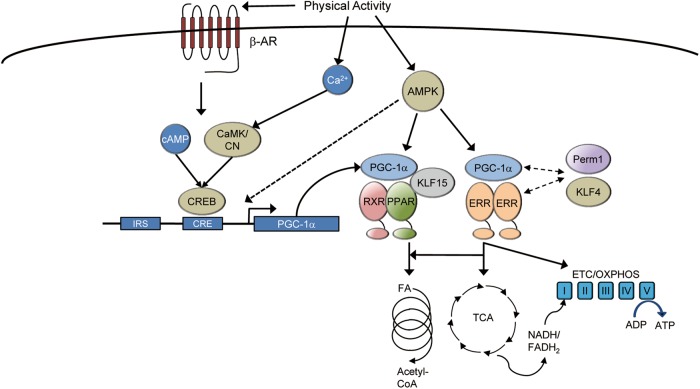Fig. 1.
Integration of upstream signaling pathways with mitochondrial biogenesis in the muscle. Multiple signaling pathways in the skeletal muscle serve to transmit changes in physical activity or other extracellular signals to mitochondrial biogenesis. Many of these pathways directly activate the peroxisome-proliferator activated receptor γ (PPARγ) coactivator-1α (PGC-1α). PGC-1α interacts directly with its effector nuclear receptors such as the estrogen-related receptor (ERR) and the peroxisome-proliferator activated receptor (PPAR) to regulate genes involved in virtually all aspects of mitochondrial energy metabolism. CaMK calmodulin-dependent kinase, CN calcineurin, AMPK AMP-dependent kinase, β-AR beta adrenergic receptor, IRS insulin response sequence, CRE cAMP response element, CREB cAMP response element binding protein, RXR retinoid X receptor, KLF Krüppel-like factor, FA fatty acid, ETC electron transport chain, OXPHOS oxidative phosphorylation

